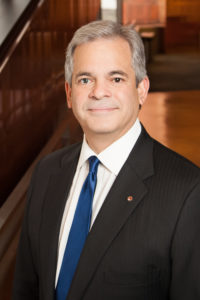By  Mayor Adler and Travis County Judge Sarah Eckhardt
Mayor Adler and Travis County Judge Sarah Eckhardt
When considering our community’s access to opportunity and prosperity, Austin and Travis County have much to celebrate — but also much work to do.
Though we learned with last week’s release of the Community Advancement Network’s annual Dashboard Report that unemployment in Travis County has declined by more than 50 percent since 2012, we also learned that 25 percent of black and Hispanic families in the county live in poverty, as compared to only 10 percent of other families.
Austin and Travis County know this kind of imbalance is unacceptable. Any solution that resolves our community’s ongoing challenges to affordability and equity will need to better align the jobs we know we can create and attract with the skills of the Central Texans who need to climb ladders of opportunity. Our teams have been working with community partners to do just that — by launching a new “middle skills initiative” with the ultimate goal of reducing poverty and increasing equity in Central Texas.
Leadership and strategic direction in this effort has been provided by Workforce Solutions Capital Area, which along with other partners has prepared a Metro Austin Master Community Workforce Plan that’s being introduced to the community on June 1. With input from regional chambers of commerce, unions and trade associations, academia, nonprofits, workforce training providers and major employers, the Workforce Plan sets as its objective that 10,000 residents currently living at or below 200 percent of poverty will secure middle-skill jobs by 2021.
Simply put, “middle-skill” jobs are those that require more training or education than a high-school diploma but less than a bachelor’s degree. It’s estimated that Austin will have more than 60,000 openings for such jobs by 2021 in fields including information technology, health care, manufacturing, skilled trades and personal and professional services.
We cannot continue to fill these types of jobs just by importing workers from elsewhere. Instead, we must invest in efficient and practical training strategies to get our own residents — whose skills and talents are being untapped and underutilized — into position to gain and succeed in those jobs.
The Master Community Workforce Plan provides an excellent starting point for organizing the many efforts that will be needed to lift 10,000 people away from poverty. These include:
• Building awareness of the job opportunities in high-demand, middle-skill careers among young adults and lower-income families.
• Expanding, enhancing and realigning training programs to produce the number of qualified candidates — the plan targets 12,000 — needed by industry to fill emerging middle-skill jobs.
• Placing economically disadvantaged residents — the plan targets 8,000 — in available middle-skill jobs.
• Upskilling existing front-line workers, so that they can advance to middle-skill jobs.
Austin and Travis County are fortunate to have partners that include Workforce Solutions, Capital IDEA, Skillpoint Alliance, Goodwill Industries, American YouthWorks, Austin Area Urban League and Austin Community College. These organizations are doing much good work already in these areas, in collaboration with employers, school districts, and local governments.
But we need to scale up substantially to meet our workforce demands — and we need to target our efforts to help those who are economically disadvantaged here in our own community. Only by taking larger, more courageous and more challenging steps forward will we achieve our ultimate shared goal of lifting thousands of Central Texans out of poverty.
We commit to continuing to provide leadership and guidance to the network of engaged professionals and talent champions who can turn the Workforce Plan into a reality.
Austin needs to be better — and always continue to improve — as a place where all our neighbors can enjoy economic opportunity, a sustainable quality of life and a bright future.
